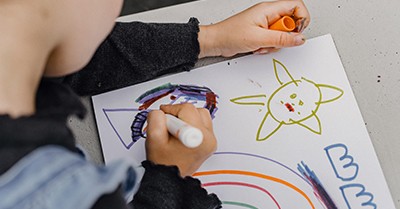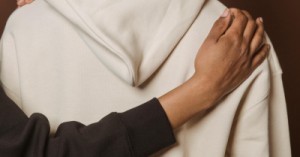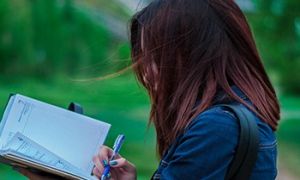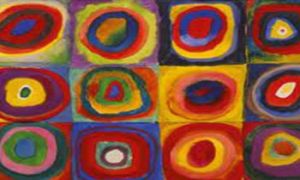In many early childhood settings, art activities have unintentionally become routine tasks—structured, time-bound, and educator-led. Children are often called one by one to complete pre-set crafts, given step-by-step instructions, and quickly ushered away. This approach can lead to disengagement, low interest, and a missed opportunity to nurture creativity and emotional development.
But art in early learning should be more than a checklist item—it should be a space for wonder, autonomy, and meaning-making. When children are empowered to lead their artistic journeys, they develop confidence, communication skills, and a deeper sense of identity. This article explores how to shift from task-oriented art to experiences that truly honour children’s agency and align with the Early Years Learning Framework (EYLF) and National Quality Standard (NQS).
Why It Matters
Art is a powerful tool for self-expression, emotional regulation, and cognitive development. When children are treated as passive participants, art becomes a compliance task. But when they’re empowered to lead, it becomes a rich, meaningful experience that supports holistic learning.
Common Pitfalls in Art Provision
- Production-line setups: Children complete identical pieces with minimal variation.
- Educator control: Instructions dominate, leaving no room for experimentation.
- Low engagement: Children lose interest quickly, sensing the lack of relevance or ownership.
Reimagining Art Through EYLF & NQS
| Framework | Connection to Child-Centered Art |
|---|---|
| EYLF Outcome 1: Children have a strong sense of identity | Art becomes a medium for self-expression and storytelling. |
| EYLF Outcome 4: Children are confident and involved learners | Open-ended art fosters problem-solving, persistence, and creativity. |
| EYLF Outcome 5: Children are effective communicators | Visual arts support non-verbal communication and emotional literacy. |
| NQS QA1: Educational Program and Practice | Art experiences reflect intentional teaching and responsiveness. |
| NQS QA5: Relationships with Children | Respecting children’s choices builds trust and emotional safety. |
Practical Strategies for Change
1. Open-Ended Invitations
- Set up art provocations with diverse materials—natural items, recycled goods, and textures—and let children decide how to engage.
2. Flexible Timing
- Allow children to access art throughout the day, not just in scheduled blocks. This supports spontaneous creativity.
3. Collaborative Projects
- Encourage group murals, shared sculptures, or storytelling through art. This builds community and shared meaning.
4. Educator as Co-Learner
- Shift from directing to observing, listening, and scaffolding. Ask questions like “What are you thinking about here?” or “What does this remind you of?”
5. Documenting the Journey
- Display children’s work with their words, photos of the process, and reflections. Celebrate the thinking, not just the product.
Examples Of Art For Children
Here are some vibrant examples of art for children that showcase creativity, exploration, and child-led expression. These images have been successfully retrieved and will be displayed in the image card below:
Highlights of Child-Centered Art Projects
- Mixed Media Collage: Combines paper, fabric, and natural materials for tactile exploration.
- Abstract Painting: Encourages emotional expression through color and movement.
- Nature-Inspired Art: Uses leaves, twigs, and stones to connect creativity with the environment.
- Group Murals: Foster collaboration and shared storytelling.
- Famous Artist-Inspired Projects: Introduces children to styles like Van Gogh’s swirls or Kandinsky’s shapes, adapted for open-ended play.
These examples reflect process-focused approaches that prioritize imagination over perfection. Let me know if you'd like a printable gallery or a curated set of activity instructions to accompany them.
Art in early childhood should never feel like homework. It should feel like wonder, exploration, and joy. By reclaiming child-centered practices, educators not only enrich learning but also honour the unique voices of every child.
Further Reading
Process Art Vs Product Art In Early Childhood Services
Linking Art To The EYLF Learning Outcomes
Benefits Of Art and Craft
Importance of Displaying Children's Artwork
Benefits Of Creative Arts For Children In Early Childhood Services
50 Process Art Activities
Art and Craft Descriptions With Links To The EYLF
EYLF Curriculum Planning For Creative Arts
20 Collaborative Art Projects For Preschoolers
Stages Of Artistic Development In Children







 As an Educator in Australia, your pay rate falls under the Children’s Services Award 2010. This award states the minimum amount that an employer can
As an Educator in Australia, your pay rate falls under the Children’s Services Award 2010. This award states the minimum amount that an employer can When working as a qualified Early Childhood Teacher (with a university degree) within a service, your rate of pay will come from the Educational Services
When working as a qualified Early Childhood Teacher (with a university degree) within a service, your rate of pay will come from the Educational Services When working as a Diploma Qualified Educator your pay rate is from the Children's Services Award 2010. This Award states your minimum rate of pay
When working as a Diploma Qualified Educator your pay rate is from the Children's Services Award 2010. This Award states your minimum rate of pay When working as a Cert 3 Qualified Educator, your pay rate is from the Children's Services Award 2010. This Award states your minimum rate of
When working as a Cert 3 Qualified Educator, your pay rate is from the Children's Services Award 2010. This Award states your minimum rate of Educational Leaders play a crucial role in their early childhood service by ensuring that the educational program aligns with best practices and supports the holistic
Educational Leaders play a crucial role in their early childhood service by ensuring that the educational program aligns with best practices and supports the holistic In early childhood education and care, ratios are more than a technicality—they are a frontline safeguard. Every child deserves responsive supervision, emotional connection, and developmental
In early childhood education and care, ratios are more than a technicality—they are a frontline safeguard. Every child deserves responsive supervision, emotional connection, and developmental With the new national child safety reforms kicking in on 1 September 2025, early childhood services like yours have a real opportunity to lead the
With the new national child safety reforms kicking in on 1 September 2025, early childhood services like yours have a real opportunity to lead the Here’s a comprehensive Mobile Phone and Smart Watch Policy tailored for early childhood education and care (ECEC) services in Australia, aligned with the latest 2025
Here’s a comprehensive Mobile Phone and Smart Watch Policy tailored for early childhood education and care (ECEC) services in Australia, aligned with the latest 2025 The Sea of Fish Challenge is a national initiative that invites children, educators, families, and communities to create and display fish artworks as a symbol
The Sea of Fish Challenge is a national initiative that invites children, educators, families, and communities to create and display fish artworks as a symbol Across the early childhood education and care sector, educators are sounding the alarm: current staffing ratios are insufficient to deliver safe, meaningful, and developmentally appropriate
Across the early childhood education and care sector, educators are sounding the alarm: current staffing ratios are insufficient to deliver safe, meaningful, and developmentally appropriate


